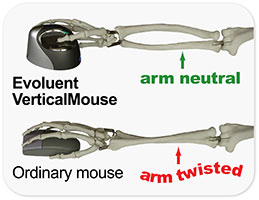Introduction
People often tell me that a standing desk will alleviate all workplace discomfort. In reality, standing workstations are not for everyone. In this article, I will give you points to consider before purchasing a sit-stand workstation.
These People Likely Need It
Often, employees with hip pain or returning to work after back surgery will experience discomfort after sitting for 15 minutes. If in these situations, standing alleviates discomfort, then a sit-stand desk could be appropriate.
Some people don’t experience strain in sitting but sit for long hours at a time. Because of work duties, some employees cannot get away from their desks. They do not take regular breaks in standing and sit at their desks for lunch. I have met people who work for up to 10-hours a day, sit at their desk for 5 hours at a time, and only get up to go to the bathroom. For employees who need to work at their desks like this, a standing desk could be an appropriate option. It will allow you to regularly alternate positions, decrease stiffness, and promote concentration.
Points To Consider
There are a few types of sit-stand desks out there. Here are some points to consider before purchasing a standing desk.
Desk size
Before purchasing a sit-stand desk, check the specifications. You should ask yourself: what is the width and depth of the table (top of the desk)? Will I be able to fit all of my supplies, computer equipment and hard copy paperwork on the work surface? Is the table depth too small? Can I position my monitor(s) about an arms length away or will I have to place it uncomfortably close? Will this desk fit my current/remodeled workspace? You will have to get out a measuring tape to answer these questions. Thoughtfully considering these questions before your purchase will ensure the correct fit.
The Sit-Stand Converter
The sit-stand converter (AKA standing desk riser) allows you to raise the height of your workstation without remodeling and/or purchasing a new desk. Sit-stand converters are less expensive than a full-on sit-stand desk. Still, consumers must understand exactly what they want and what problems they are trying to solve before purchasing a sit-stand converter. On many occasions, the more expensive full-on standing desk will be necessary. Before purchasing a sit-stand converter consider the fact that this converter will go over an existing desk. It will raise the height of your entire workstation. If you are reaching up for your keyboard and mouse the converter will raise these input devices even further. You also need to consider the size of the sit-stand converter. Ask yourself: will the top of the converter give me enough space for my monitor(s)? Will the tray provide room for my keyboard and mouse (some converter keyboard trays have a small depth)? Before purchasing, you should check the specifications of the particular converter you are interested in and ensure that your computer equipment will adequately fit.
Will I Use It?
This question seems obvious. You are interested in standing at your workstation. You want one and plan on using it. However, that is not always the case. I have met many clients who have a standing desk but never stand. Using a standing desk requires some behavioral adjustments and habit training. You are about to stand at your workstation for parts of the day and will be alternating between sitting and standing positions during stressful work hours. Consider this question thoughtfully: will I really use a standing desk?
Conclusion
In this article, we discussed features/specifications to look out for before purchasing a standing desk. We described how a standing desk may (or may not) be right for you and some points to consider when picking the right sit-stand desk. Yet, there are still ergonomic obstacles that people face, even after purchasing the right standing desk. Many people overlook the monitor height, chair adjustability, and the time spent in standing after purchasing a sit-stand workstation. In short, how can we properly use a standing desk? We will answer this question in a future post.
Thanks for reading,
Shaul Lent OTR/L, MA, CEAS, Lead Ergonomic Specialist, Ergonomics Advance








